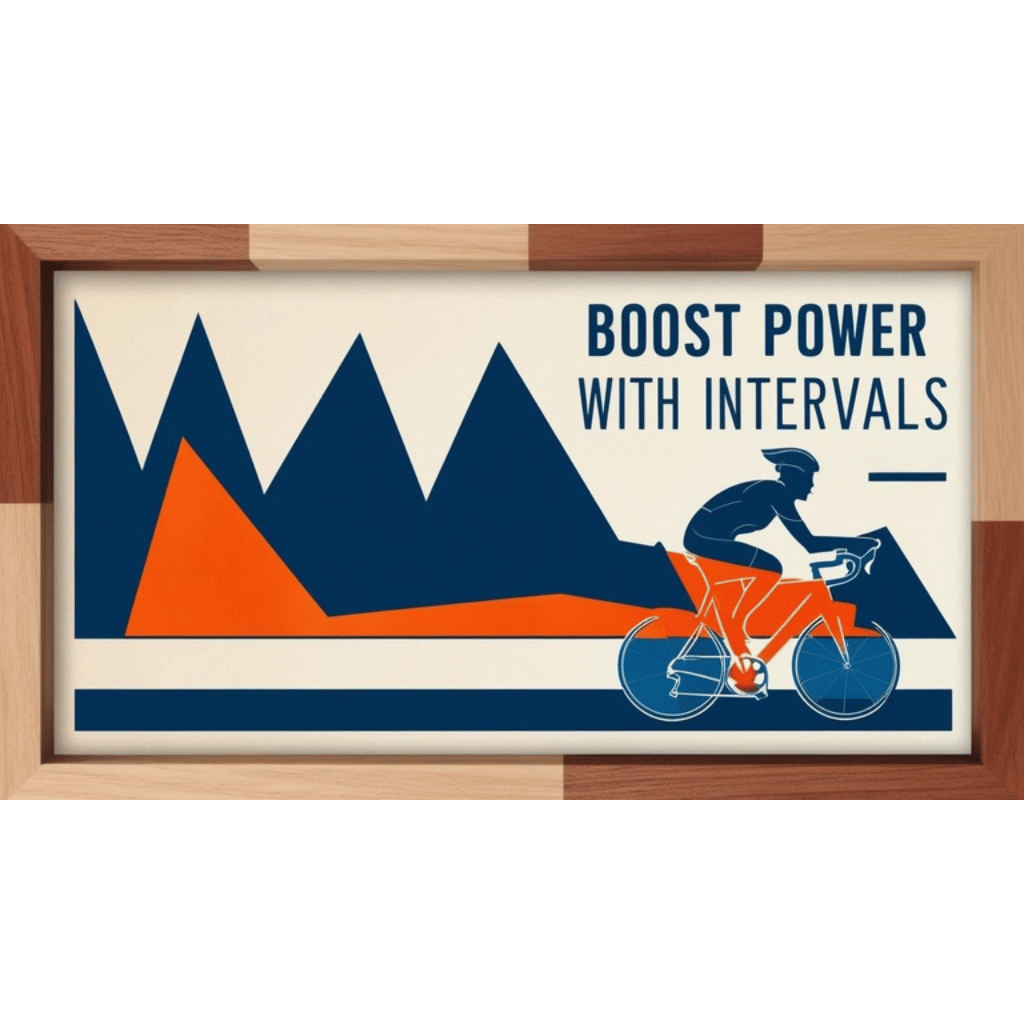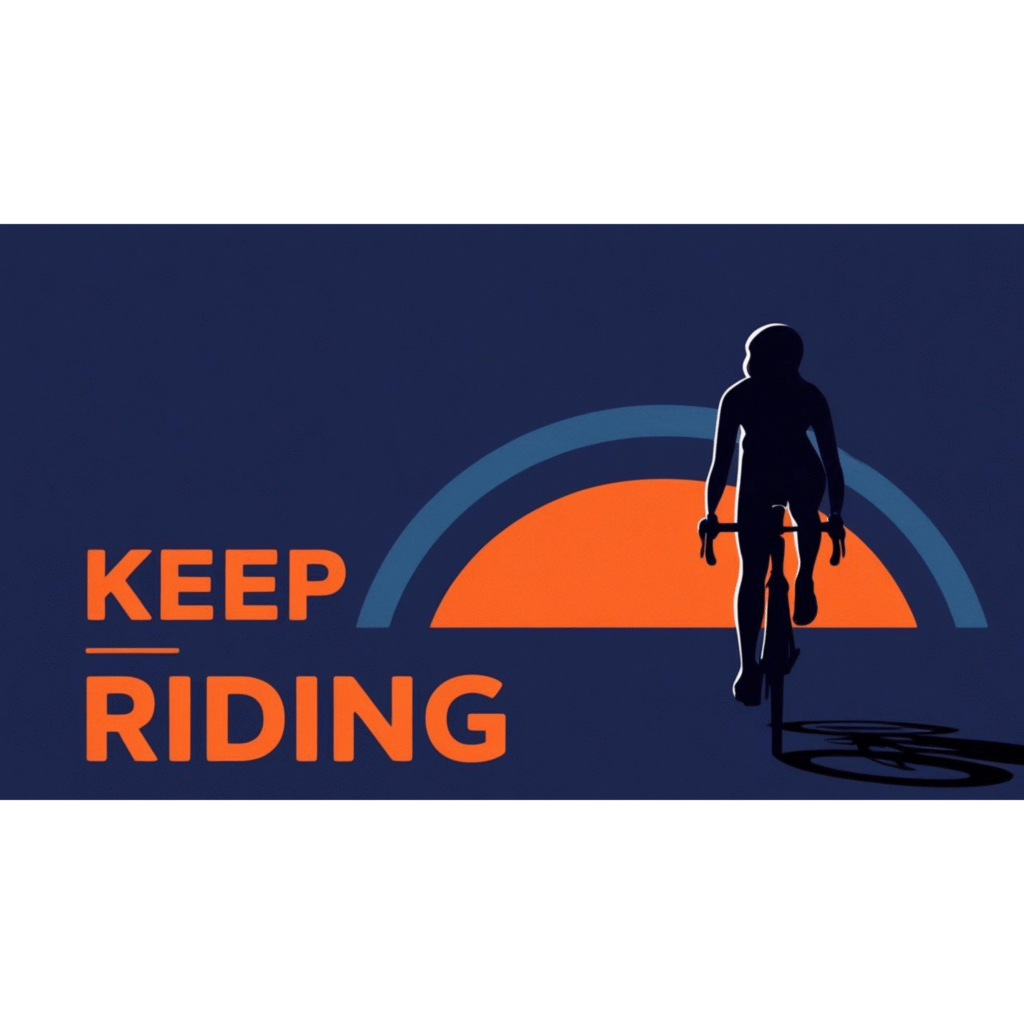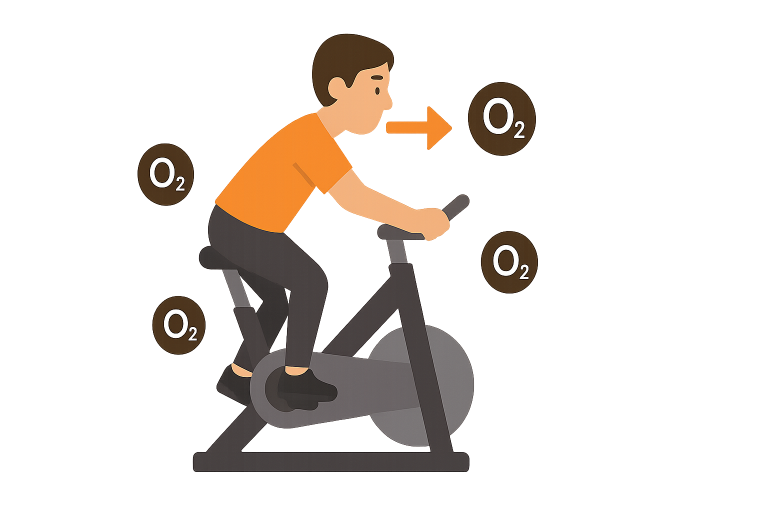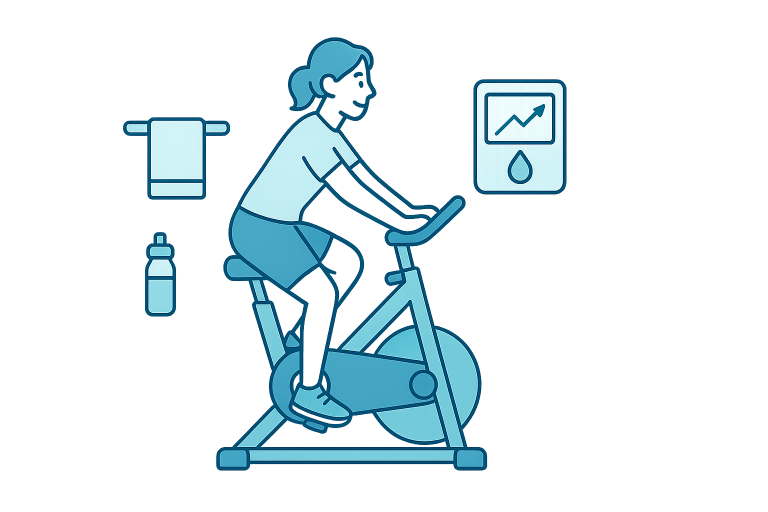The Expert’s Indoor Cycling Fitness Guide (2025)
Ready to master indoor cycling with the ultimate indoor cycling fitness guide 2025? I’m Juniata, and over the past three years, indoor training has been key for my weight maintenance and health. From setting up your first bike to creating advanced training plans, this comprehensive guide covers everything to become a confident indoor cyclist—whether you’re new, improving your routine, or maintaining fitness during winter.
Indoor cycling has experienced a significant surge in popularity, and it’s easy to see why, with its blend of efficiency, technology, and impressive results.
Over the past three years, incorporating indoor training into my routine has become a key tool for my weight maintenance and overall health. Moreover, I’ve learned some valuable lessons that will make your indoor cycling journey much smoother and more enjoyable than mine was initially.
We’ll dive into the compelling reasons why indoor cycling is a great way to boost your fitness, the essential equipment you’ll need, and how to structure effective training programs. By the end of this guide, you’ll know precisely how to begin or elevate your indoor cycling experience, regardless of your current fitness level.
Sounds like a plan? Great! Let’s go ahead and get started.
Key Benefits of Indoor Cycling
| Benefit | Details | Juniata’s Advice |
| Cardiovascular Health | Lowers blood pressure, boosts aerobic capacity. | “I felt my stamina improve in just weeks!” |
| Weather Independence | Train indoors regardless of rain, snow, or heat. | “Cold weather used to stop me—now I ride anytime!” |
| Calorie Burn | Burns up to 600 calories/hour, aids weight loss. | “This has been key for my weight maintenance!” |
| Joint-Friendliness | Low-impact, gentle on knees and hips. | “My knees feel so much better than when I ran!” |
| Mental Well-Being | Reduces stress, boosts mood, meditative. | “A quick ride always clears my head!” |
Why Indoor Cycling Reigns Supreme for Fitness
Indoor cycling isn’t just another workout fad. it’s a powerhouse for improving your overall health and fitness. Let’s explore the key benefits of indoor cycling that make it an excellent option for many people.
Cardiovascular Health Champion
Indoor cycling is one of the most effective ways to improve your cardiovascular health. Regular workouts can lower blood pressure, increase aerobic capacity, and improve your mood. Just 30–45 minutes a few times a week can significantly benefit your heart health and endurance. I quickly noticed a significant boost in my physical and mental well-being when I committed to working out 3-5 days a week for 30 minutes per session.
Weather? No Problem!
The great news is that with indoor training, you’re no longer at the mercy of the weather. Rain, snow, extreme heat? None of it matters when your training setup is right in your home workout space. For me, bad weather (especially cold weather) was often a convenient excuse to skip workouts. However, having the comfort and convenience of your home as your cycling studio truly changes the game. It also provides an effective way to precisely control the intensity of your workouts and focus on achieving specific goals.
The Science Behind the Burn and Gains
Indoor cycling is highly effective for burning calories, with the potential to burn up to 600 calories in an hour, depending on your effort level. No wonder it’s a favorite for those with weight loss goals. But the benefits go beyond calorie burn. An exercise bike workout can also boost your VO2 max, which measures how efficiently your body uses oxygen, key for improving endurance on both indoor and outdoor rides. Stay tuned as we dive deeper into how indoor cycling enhances VO2 max in an upcoming article.
Joint-Friendly Powerhouse
Another major plus? Indoor cycling is remarkably gentle on your joints. Running used to put a lot of stress on my knees, but since incorporating indoor cycling into my routine, I’ve experienced significantly less soreness and fewer injuries. This lower impact nature doesn’t mean lower gains, though. Indoor cycling is fantastic for building your lower body strength, engaging your quads, hamstrings, and glutes, all without the high impact that can strain your joints.
Mental Well-being Booster
This is often overlooked, but indoor cycling is more than just a workout—it’s a great stress reliever. After a tough day, 20 minutes on my indoor bike always clears my head and helps me feel more grounded.
The small wins during indoor training are motivating—hitting a personal best, completing a longer ride, or syncing with an energizing playlist. Platforms like Zwift even make virtual time trials feel meditative. It’s a great way to reset your mind while pushing your body.
Stress Reduction: Pedal Your Worries Away
Engaging in a rigorous indoor training session can be an excellent way to release tension and feel mentally lighter.
Motivation from Progress: Celebrating Your Wins
That incredible feeling of seeing your progress, whether it’s increased endurance, higher power output, or completing a longer ride, keeps you coming back for more.
The Zen of Cadence: Finding Your Rhythm
The repetitive motion of pedaling can be surprisingly calming and meditative, helping you find a sense of flow and focus.

Gearing Up for Indoor Cycling Success
Getting started with indoor training might seem intimidating with the wide array of equipment available. The good news is you don’t need the most expensive setup to achieve your fitness goals. Here’s a breakdown to help you decide what suits your needs and budget. We’ll have more detailed reviews of specific equipment in future articles.
Smart Trainers vs. Exercise Bikes: Understanding Your Options
Indoor Cycling Equipment Options
| Equipment Type | Best For | Key Features | Pros | Cons | Juniata’s Experience |
| Wheel-On Trainer | Beginners | Affordable, compact, uses your bike | Easy to set up | Can be noisy | “I started with this—loved the simplicity!” |
| Direct-Drive Trainer | Data-driven riders | Stable, app integration, real-time resistance | Immersive experience | More expensive | “Upgrading to this gave me better data!” |
| Upright Bike | Casual users | Standalone, quiet, user-friendly | No bike needed | Limited features | “I recommend this for shared spaces.” |
| Recumbent Bike | Recovery, low-impact | Comfortable, reclined position | Great for rehab | Less intense workouts | “I use this on my recovery days.” |
| Smart Bike | Advanced cyclists | Auto-resistance, virtual rides | High-tech, engaging | High cost | “This is my current setup—amazing!” |
If you already own a road bike, an indoor bike trainer like a wheel-on trainer or a direct-drive smart trainer is a great option. Turbo trainers and smart trainers can connect with apps like Zwift, making workouts interactive and providing real-time feedback. They’re compact and perfect for those with limited time or space. I started with a basic turbo trainer and later upgraded to a smart trainer, which enabled me to track and adjust my power zones more effectively.
If you don’t have a road bike, upright bikes or recumbent bikes are great standalone options for comfort and ease of use. Smart bikes, like the Wahoo KICKR Bike, offer features like automatic resistance to simulate hills or virtual rides. Recumbent bikes are ideal for recovery or a more relaxed posture while staying fit.
Wheel-On Trainers: An Accessible Entry Point
These trainers are generally more affordable and have a compact design, attaching directly to your existing bike’s rear wheel. They serve as a great way for beginners to get started with indoor training, although they can sometimes be a bit noisier compared to other setups.
Direct-Drive Trainers: Immersive and Data-Driven
These trainers replace your bike’s rear wheel, offering a more direct and stable feel. They seamlessly integrate with training programs and apps, providing real-time resistance changes for a highly immersive riding experience. If structured, data-driven workouts are your priority, this is an excellent choice.
Upright Bikes: Simple and Ready to Go
These standalone bikes are typically very user-friendly and require no additional setup with your existing bike. They are often quieter, making them suitable for shared living spaces.
Recumbent Bikes: Comfort and Low Impact
Recumbent bikes offer a comfortable, reclined position and provide excellent low-impact workouts. They are often recommended for rehabilitation purposes or for individuals who prefer a more relaxed exercise posture.
Smart Bikes: The High-Tech Indoor Experience
These are the premium, all-in-one indoor cycle setups. Think of them as the high-performance machines of the indoor training world. They offer seamless integration with platforms like Zwift and TrainerRoad, providing automatic resistance adjustments to simulate varying terrains, real-time power data, and even the ability to participate in virtual races. We’ll be diving into the latest smart bike technologies in an upcoming review.
Matching Features to Your Fitness Journey
Equipment Features for Different Levels
| Level | Recommended Features | Why It Matters | Juniata’s Advice |
| Beginner | Adjustable seat, wide pedals | Ensures comfort and ease of use | “I focused on comfort when I started!” |
| Intermediate | Power meters, light resistance | Tracks effort, adds variety | “Tracking my effort really helped me progress.” |
| Advanced | ERG mode, advanced app integration | Locks into training zones, structured workouts | “This made my training so much more effective!” |
The features you need in your indoor cycle will change as your fitness improves. Beginners should focus on comfort, with adjustable seat height and wide pedals. Intermediate riders may want to add features like power meters for tracking effort and light resistance for basic interval training. Advanced cyclists can benefit from ERG mode, which locks into specific training zones for structured, effective workouts. Stay tuned for our guide on using power meters!
Smart Bike Technology in 2025: The Cutting Edge
The advancements in innovative bike technology this year are inspiring. Many models now offer exceptional accuracy in power output measurement and provide seamless connectivity with various virtual training platforms. Want to race against others across the globe? Platforms like RGT and TrainerRoad make group rides and virtual competitions incredibly accessible and engaging. Many modern smart bikes also feature automatic resistance adjustments that mimic the inclines and declines of real-world terrain or the structured demands of indoor cycling classes. If home workouts on an indoor cycle felt monotonous before, this new technology injects a significant dose of excitement and realism.

Crafting Your Ideal Indoor Cycling Environment
You’ve selected your equipment. Now, let’s focus on setting up your training space for optimal comfort and performance. A well-organized setup can dramatically enhance your indoor training experience. Over the years, I’ve experimented with various setups and learned what contributes to a successful and enjoyable ride, as well as what doesn’t.
The Essentials for a Comfortable Ride
Indoor Cycling Setup Essentials
| Essential | Purpose | Juniata’s Tip |
| Fan(s) | Prevents overheating | “I can’t ride without my two fans!” |
| Water Bottle | Ensures hydration | “I always keep mine within reach.” |
| Entertainment | Keeps you motivated | “A good playlist makes my rides fly by!” |
| Towel | Wipes sweat, maintains grip | “I learned this the hard way—don’t skip it!” |
| Floor Mat | Reduces noise, protects flooring | “This saved my floor from sweat damage!” |
Cooling is Key: Keep the Air Flowing
Invest in at least one good fan, or even two. Trust me, you’re going to sweat! Proper ventilation is crucial for staying comfortable and preventing overheating during those intense interval workouts or longer workouts.
Hydration Station: Fuel Your Ride
Keeping a water bottle within easy reach is essential. Staying hydrated is crucial for performance and preventing dehydration, especially during those endurance rides or when pushing to maximum effort.
Entertainment: Make it Engaging
Whether it’s streaming your favorite shows on Netflix or blasting your go-to workout playlists, having entertainment options can make the time fly by and keep you motivated, especially during longer workouts.
Towel Time: Stay Dry and Comfortable
Keep a small towel handy to wipe away sweat and maintain a comfortable grip on your handlebars.
Calibration and Comfort Enhancements
Ventilation Strategies: Breathe Easy
Position your setup near an open window if possible, or utilize portable fans to ensure good airflow throughout your workout space.
Floor Protection: Minimize Noise and Damage
Placing a simple mat underneath your indoor cycle or trainer helps absorb vibrations, reduces noise levels (which is especially important if you live in an apartment or shared space), and protects your flooring from sweat and potential damage.
Ergonomics: Optimize Your Body Position
A proper bike fit is paramount for comfort and injury prevention. Adjust your saddle height so that you have a slight bend in your knee when the pedal is at its lowest point of the pedal stroke. Raising your handlebars slightly can also help prevent hunching and reduce strain on your back. Investing in a well-fitted saddle and using proper cycling shoes with correctly aligned cleats can be a game-changer for both comfort and power transfer. We will have a detailed guide on achieving optimal bike fit for indoor training coming soon.

Structuring Effective Indoor Cycling Workouts
With your bike and setup ready, the next crucial step is planning your training sessions. They don’t need to be overly complex to be highly effective in helping you achieve your specific goals.
Understanding Training Zones and Power Levels
Finding Your Numbers: FTP and Maximum Heart Rate
To effectively utilize training zones, you’ll need to determine your Functional Threshold Power (FTP) or your maximum heart rate. There are various tests and methods to estimate these values, which will serve as the foundation for setting your training intensities. We will explore different methods for determining your FTP in a future article.
What They Represent: Targeting Specific Fitness Gains
Indoor Cycling Training Zones
| Zone | Intensity | Purpose | How It Feels | Juniata’s Note |
| Zone 1 | Low (RPE 1-2) | Recovery, warm-up | Easy, conversational | “I use this for my recovery rides.” |
| Zone 2 | Moderate (RPE 3-4) | Endurance, aerobic base | Sustainable, steady | “I love these for longer sessions.” |
| Zone 3 | Moderate-High (RPE 5-6) | Sweet spot, efficiency | Challenging but manageable | “This zone helped my stamina grow!” |
| Zone 4 | High (RPE 7-8) | Threshold, power | Hard, focused effort | “I push here for big improvements.” |
| Zone 5 | Max (RPE 9-10) | Max effort, speed | All-out, can’t talk | “I save this for short, intense bursts!” |
Training zones are specific ranges of intensity that correspond to different physiological benefits. Understanding these zones allows you to target particular aspects of your fitness, such as endurance, speed, or recovery.
How It Feels: Gauging Your Effort
Each training zone has a distinct perceived exertion level. Think of it as a spectrum, ranging from a leisurely conversational pace to a level where maintaining the effort feels like maximum effort.
Variety is the Spice of Cycling: Different Types of Workouts
Interval Workouts: Boosting Power and Calorie Burn
Interval workouts involve alternating between periods of high-intensity efforts and periods of recovery. This type of workout is highly effective for improving your power output, increasing your maximum heart rate, and maximizing calorie burn in less time. Stay tuned for our comprehensive guide on designing effective interval workouts.
Sweet Spot Workouts: The Efficiency Zone
Sweet spot workouts are performed at an intensity just below your FTP. This type of training is excellent for improving your endurance and building a strong aerobic base without the extreme fatigue associated with higher-intensity efforts. These are a great way to get significant improvements in your fitness gains. We’ll be sharing some advanced sweet spot workouts in an upcoming article.
Steady-State Rides: Building Endurance and Mental Fortitude
These longer workouts are performed at a consistent, moderate intensity. They are crucial for building endurance and improving your body’s ability to sustain effort over extended periods. They also contribute to mental toughness, preparing you for longer ride scenarios, whether indoor or outdoor cycling.
Periodization: The Key to Sustainable Progress
4-Week Periodization Plan
| Week | Focus | Workout Types | Intensity | Juniata’s Tip |
| Week 1 | Build Intensity | Intervals, Sweet Spot | Moderate to High | “I push hard but listen to my body.” |
| Week 2 | Build Intensity | Intervals, Steady-State | Moderate to High | “I focus on staying consistent here.” |
| Week 3 | Peak Intensity | High-Intensity Intervals | High | “I give it my all this week!” |
| Week 4 | Recovery | Recovery Rides, Light Stretching | Low | “I take it easy to recharge.” |
Here’s a valuable secret for making consistent progress without experiencing burnout: periodization. This involves cycling through phases of higher training load followed by periods of active recovery. A common approach is to:
Push Hard for 3 Weeks: Build Intensity
Engage in more intense specific workouts, including interval workouts and sweet spot workouts, for a period of three weeks to stimulate significant physiological adaptations.
Take Week 4 for Recovery: Rejuvenate and Adapt
Dedicate the fourth week to recovery rides characterized by low intensity and shorter durations. This allows your body to recover and adapt to the training stress, ultimately leading to greater long-term significant improvements. We will explore more advanced periodization strategies in a future guide for advanced cyclists.

Essential Indoor Cycling Tips for All Levels
This section contains valuable advice for everyone, from those clipping in for their first indoor cycling class to seasoned advanced cyclists looking to refine their technique and training.
Starting Your Indoor Journey: Avoiding Common Pitfalls
Don’t Skip the Warm-Up: Prepare Your Body
Always begin your indoor training sessions with a gradual warm-up to prepare your muscles and cardiovascular system for the work ahead. This helps prevent injuries and improves performance.
Resist the Urge to Overdo Resistance: Build Gradually
Especially when starting, focus on maintaining a good cadence and gradually increasing resistance as your strength and fitness improve. Don’t try to push too hard too soon.
Prioritize Proper Setup: Your Bike is Your Partner
Ensure your bike is correctly adjusted to your body. Proper seat height, handlebar reach, and cleat alignment are crucial for comfort, efficiency, and injury prevention. Refer to our upcoming detailed guide on bike fit for more information.
Embrace Rest Days: Recovery is Part of the Process
Don’t underestimate the importance of rest and recovery. Your body needs time to repair and rebuild after workouts. Incorporate rest days into your training programs to maximize your fitness gains.
A Quick Start Plan for Beginners: Your First 10 Weeks
10-Week Beginner Indoor Cycling Plan
| Weeks | Focus | Frequency | Duration | Intensity | Juniata’s Guidance |
| Weeks 1-2 | Get Acquainted | 2 rides/week | 20 mins | Low (RPE 1-2) | “I focused on getting comfortable first.” |
| Weeks 3-6 | Build Consistency | 3 rides/week | 30 mins | Low-Moderate (RPE 3-4) | “I added short intervals to keep it fun.” |
| Weeks 7-10 | Increase Intensity | 3 rides/week | 40-50 mins | Moderate (RPE 5-6) | “I pushed a bit harder as I got stronger.” |
This 10-week training plan is designed to gradually introduce you to indoor cycling and build a solid foundation of fitness.
Weeks 1-2: Getting Acquainted
Focus on 20-minute rides at a low intensity, two times per week. The goal is to get comfortable on the bike and establish a routine.
Weeks 3-6: Building Consistency and Duration
Add a third weekly ride and gradually increase each session to 30 minutes. Begin to incorporate very short, low-intensity interval workouts to introduce variations in effort.
Weeks 7-10: Increasing Intensity and Introducing Moderate Intervals
Increase your ride duration to 40–50 minutes and start incorporating moderate intervals of slightly higher intensity followed by recovery periods. This will help build your endurance and cardiovascular fitness.
Challenges for the Advanced Rider: Pushing Your Limits
Advanced Indoor Cycling Challenges
| Challenge | Description | Benefits | Juniata’s Pro Tip |
| Torque Drills | Low cadence, high resistance | Builds raw power | “I go slow and steady to feel the burn.” |
| Progressive Intervals | Increasing intensity/duration intervals | Enhances FTP | “I start moderate, then build to max effort.” |
| Cadence Workouts | High cadence, moderate resistance | Improves leg speed | “I aim for 100+ RPM—smooth and fast!” |
Are you seasoned and looking for more? Try this.
Torque Drills: Building Raw Power
These involve pedaling at a low cadence with high resistance, which helps to build raw muscular power and strength in your legs.
Progressive Intervals: Enhancing Your FTP
These are interval workouts where the duration or intensity of the high-effort periods gradually increases throughout the workout. This is a highly effective way to improve your FTP.
Cadence Workouts: Developing Leg Speed
Focus on maintaining a very high pedaling cadence (revolutions per minute) at a moderate resistance. This helps to improve your leg speed and efficiency.
Additionally, as an advanced cyclist, consider incorporating strength training and mobility exercises into your overall training regimen to complement your indoor cycling and prevent imbalances. We will have a dedicated article on strength training for cyclists coming soon.

Final Thoughts: Your Indoor Cycling Fitness Guide 2025 Journey
Indoor cycling has transformed my physical health and mental well-being. Whether it’s a tough high-intensity session or a therapeutic ride, it’s a key part of my daily life. This guide provides a comprehensive overview, with additional information to follow in future articles.
No matter where you start, remember: consistency beats perfection. Build a routine that works for you, show up regularly, and don’t stress about doing everything perfectly. Over time, your dedication will lead to significant improvements and fitness gains.
Most importantly? Enjoy yourself.






